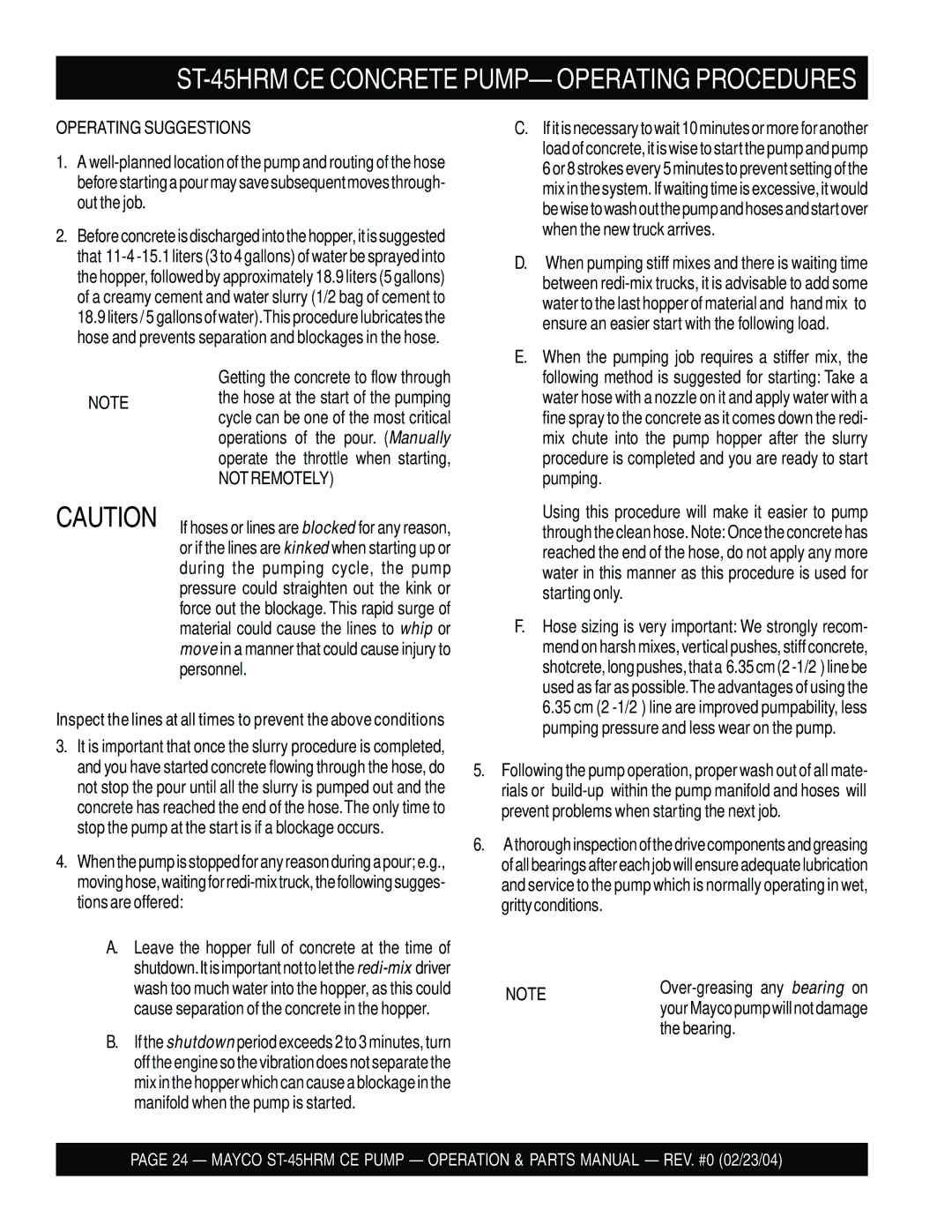ST-45HRM CE specifications
The Multiquip ST-45HRM CE is a robust and versatile machine designed for a variety of heavy-duty applications, particularly in construction and industrial settings. Known for its durability and efficiency, the ST-45HRM CE stands out due to its combination of advanced technology, user-friendly features, and powerful performance, making it an ideal choice for professionals seeking reliable equipment.One of the main features of the ST-45HRM CE is its powerful engine. It is equipped with a high-performance diesel engine that provides exceptional reliability and fuel efficiency. This engine allows the machine to achieve high-performance levels while minimizing operational costs, making it a cost-effective solution for various jobs. Additionally, the engine meets stringent environmental regulations, ensuring compliance with the latest emission standards.
The ST-45HRM CE is designed with operator comfort and safety in mind. One of its key characteristics is the spacious and ergonomically designed operator platform that allows for easy access and enhanced visibility. The controls are intuitively placed, providing excellent maneuverability and reducing operator fatigue during long working hours. Moreover, safety features such as emergency shut-off switches and protective enclosures are built into the design, ensuring a safer working environment.
In terms of technology, the ST-45HRM CE is equipped with advanced hydraulic systems that enhance its lifting capabilities. This machine is capable of lifting loads up to 45 tons, making it suitable for heavy materials and equipment. The hydraulic system is designed for smooth operation, allowing for precise control and optimal performance in various applications, including lifting, transportation, and heavy-duty towing.
Maintenance is another consideration where the ST-45HRM CE excels. It features easy access points for routine checks and repairs, reducing downtime and operational costs associated with maintenance. The components are engineered for longevity, ensuring that the machine can withstand the rigors of continuous use in demanding environments.
Overall, the Multiquip ST-45HRM CE is a standout in its category, boasting an exceptional blend of power, efficiency, and user-centric design. With its advanced features, safety technologies, and ease of maintenance, it is ideal for professionals in construction, industrial lifting, and other heavy-duty applications, providing a reliable solution to meet their needs.

